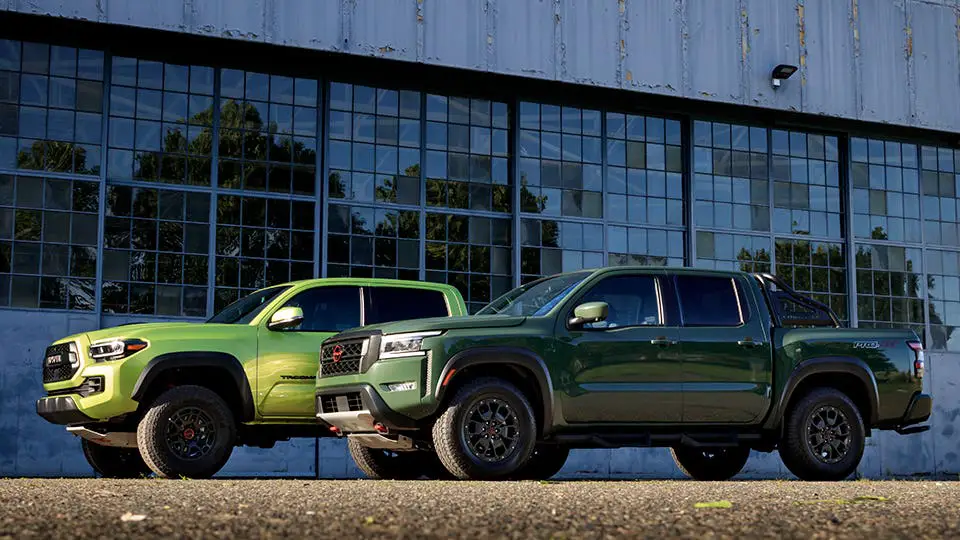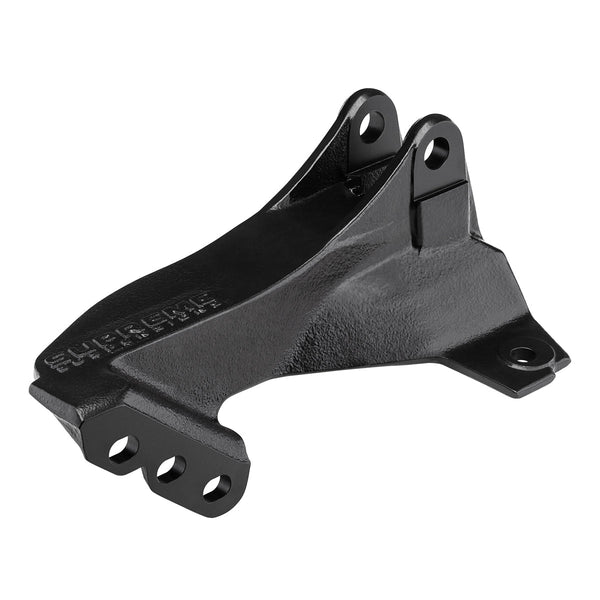In automotive suspension systems, track bars and sway bars have distinct functions. Track bars are designed to prevent lateral movement or side-to-side shifting of the axle, enhancing stability and control during steering and braking.
Sway bars, on the other hand, minimize body roll during turns by linking the left and right sides of the suspension, redistributing weight and maintaining better traction. Most commonly found in trucks and larger vehicles, track bars are crucial for off-road and heavy-duty applications.
Sway bars, on the other hand, are used in a broader range of vehicles, including passenger cars, to improve handling and overall stability on the road. Both components play vital roles in the overall performance of a vehicle’s suspension system, ensuring a safer and more comfortable driving experience.

Functionality
When it comes to off-roading or high-performance driving, having a properly functioning suspension system is essential. Two key components of this system are the track bar and sway bar. Each performs a distinct role in ensuring stability and control while driving. Let’s dive into the functionality of both track bars and sway bars to better understand their importance.
Track Bars Functionality
A track bar, also known as a panhard or panhard rod, is a vital component of a vehicle’s suspension system. It is responsible for keeping the body of the vehicle properly aligned with the chassis. In other words, it prevents lateral or side-to-side movement of the axle, enabling a more predictable and stable driving experience.
1. Track bars are generally found in solid axle suspensions and are designed to control the axle’s left and right movement.
2. They are positioned diagonally between the chassis and the axle, maintaining a consistent distance and angle, particularly during cornering and uneven road surfaces.
3. By minimizing axle movement, track bars enhance steering precision, reducing body roll and improving overall handling and stability.
4. This functionality is especially crucial when navigating off-road terrains or engaging in high-speed driving.
Sway Bars Functionality
A sway bar, also known as a stabilizer bar or anti-roll bar, is another important component of a vehicle’s suspension system. It is designed to reduce body roll and improve cornering stability.
1. Sway bars are typically found in independent suspension setups and connect the left and right sides of the vehicle’s suspension.
2. They work by transferring the weight of the vehicle from one side to the other during cornering, minimizing body roll and increasing traction.
3. This functionality greatly enhances overall control and stability when maneuvering through curves or executing quick lane changes.
4. Sway bars are especially beneficial for vehicles with a higher center of gravity, such as SUVs or trucks, as they help maintain a balanced and secure driving experience.
In conclusion, while both track bars and sway bars play important roles in a vehicle’s suspension system, they have different functionalities. Track bars primarily focus on preventing lateral movement of the axle, ensuring stability and predictability during driving. Sway bars, on the other hand, are designed to reduce body roll, especially during cornering, improving control and traction. Both components are essential for a well-functioning suspension system, and their optimal functionality greatly contributes to a safe and enjoyable driving experience.

Credit: www.supremesuspensions.com
Importance In Vehicle Performance
Vehicles are complex machines with multiple components working together to ensure optimal performance. Two of these components, the track bar and the sway bar, play a crucial role in the overall vehicle performance, particularly in terms of handling and stability.
Impact On Handling
The track bar and the sway bar both contribute significantly to the handling of a vehicle. The track bar, also known as a panhard rod, helps to maintain proper alignment between the chassis and the axle. It controls the lateral movement of the axle, preventing any side-to-side motion. This means that when a vehicle is cornering or navigating uneven terrain, the track bar keeps the axle in line, enhancing stability and ensuring precise handling.
The sway bar, on the other hand, aids in controlling body roll during cornering or sudden maneuvers. It is a torsion bar that connects the left and right sides of the suspension system. By resisting the twisting force generated by weight transfer, the sway bar helps to keep the vehicle level and evenly distributed on all tires. This allows the tires to maintain better contact with the road, resulting in improved grip and enhanced handling capabilities.
Impact On Stability
Stability is paramount when it comes to vehicle performance, especially in high-speed situations or when driving on challenging terrains. Both the track bar and the sway bar have a significant impact on the stability of a vehicle.
The track bar, as mentioned earlier, ensures that the axle remains in line with the chassis. This alignment is crucial for maintaining stability, as any lateral movement of the axle can lead to an unstable and unpredictable driving experience. By minimizing axle movement, the track bar helps to prevent unwanted sway and maintains a solid connection between the wheels and the chassis.
The sway bar, with its ability to control body roll, further enhances stability. During high-speed turns or sudden lane changes, weight transfer occurs, causing the vehicle to lean to one side. The sway bar counteracts this motion, effectively reducing body roll and allowing the vehicle to remain more stable and balanced. This enhances driver confidence and overall safety.
| Track Bar | Sway Bar |
|---|---|
| Controls lateral movement of the axle | Aids in controlling body roll |
| Maintains proper alignment between the chassis and the axle | Connects the left and right sides of the suspension system |
| Enhances stability and ensures precise handling | Improves grip and enhances handling capabilities |
| Prevents unwanted sway and maintains a solid connection between the wheels and the chassis | Reduces body roll and allows the vehicle to remain stable and balanced |
In conclusion, both the track bar and the sway bar are essential components that contribute to the overall performance of a vehicle. They play a vital role in ensuring precise handling and maintaining stability, making them crucial for an enjoyable and safe driving experience.
Installation And Adjustment
When it comes to enhancing the performance and stability of your vehicle, the installation and adjustment of track bars and sway bars play a crucial role. Proper installation and adjustment of these components can significantly improve the handling and overall driving experience. Below, we’ll explore the process of installing and adjusting track bars and sway bars, providing a clear understanding of each component’s role and the steps involved.
Track Bar Installation And Adjustment
Track bars, also known as Panhard bars, are essential components in a vehicle’s suspension system, helping to control lateral movement of the axle. When installing a track bar, ensure that it is securely attached to the chassis at one end and the axle housing at the other.
- Use proper tools to tighten all bolts and ensure the bar is aligned with the chassis and axle housing.
- Adjust the track bar to achieve the desired height and alignment, considering factors such as vehicle weight and intended use.
- Regularly inspect the track bar for any signs of wear or damage, and make adjustments as necessary to maintain optimal performance.
Sway Bar Installation And Adjustment
Sway bars, also referred to as stabilizer bars, play a key role in minimizing body roll during cornering and improving stability. The installation of sway bars involves attaching them to the chassis and linking them to the suspension components using appropriate bushings and brackets.
- Ensure that the sway bar is securely fastened to the chassis and suspension components, taking care to tighten all bolts to the recommended torque specifications.
- Adjust the sway bar to achieve the desired stiffness, considering factors such as driving style and road conditions.
- Regularly inspect the sway bar and its connections for any signs of wear or damage, and make necessary adjustments to maintain optimal performance and safety.

Credit: www.motortrend.com
Off-road Performance
When it comes to off-road performance, choosing between a track bar and sway bar is crucial for your vehicle’s handling.
Track Bar Off-road Performance
- A track bar enhances stability by minimizing lateral movement of the axle during off-road adventures.
- It helps prevent the vehicle from swaying excessively when navigating rough terrains.
- Improves traction and control, especially on uneven surfaces and during tight turns.
Sway Bar Off-road Performance
- A sway bar reduces body roll, keeping your vehicle more level when going over obstacles.
- Enhances cornering performance by minimizing body lean, allowing for better maneuverability.
- Provides a smoother ride by reducing the likelihood of rollovers on challenging trails.
On-road Performance
The track bar and sway bar play crucial roles in on-road performance, ensuring stability and control during cornering and steering. While the track bar controls the lateral movement of the axle, the sway bar minimizes body roll. Both are essential components in optimizing a vehicle’s handling and keeping it steady on the road.
Track Bar On-road Performance
The track bar provides stability by preventing lateral movement, crucial for maintaining control on smooth roads.
- Less body roll during turns results in a smooth and stable drive
- Enhances steering response and reduces sway for better handling
Sway Bar On-road Performance
The sway bar improves handling by reducing body roll, making your drive safer and more comfortable.
- Minimizes swaying on corners for improved vehicle stability
- Increases traction and grip on the road for enhanced control

Credit: tunergenix.com
Comparative Analysis
In the world of vehicle suspension, both track bars and sway bars play a crucial role in enhancing stability and control. Understanding their strengths and weaknesses is essential for making informed decisions about vehicle modifications and upgrades.
Strengths And Weaknesses Of Track Bars
Let’s delve into the strengths and weaknesses of track bars, which are pivotal components in a vehicle’s suspension system.
- Strengths
- Enhances lateral stability
- Reduces body roll during cornering
- Minimizes axle shifting
- Improves overall handling and control
- Weaknesses
- May cause a harsher ride on uneven terrain
- Can transfer more road imperfections to the vehicle’s body
- Requires precise installation and alignment for optimal performance
Strengths And Weaknesses Of Sway Bars
Now, let’s examine the strengths and weaknesses of sway bars, also known as anti-roll bars, which are essential for reducing body roll and improving vehicle stability.
- Strengths
- Effectively minimizes body roll during cornering
- Enhances the vehicle’s cornering performance
- Improves stability during sudden swerves
- Contributes to a smoother and more controlled ride
- Weaknesses
- Can compromise wheel articulation on off-road terrain
- May result in reduced traction in certain driving conditions
- Requires proper tuning to achieve the desired balance between handling and comfort
Frequently Asked Questions Of Track Bar Vs Sway Bar
What Is The Main Difference Between A Track Bar And A Sway Bar?
A Track Bar is designed to control lateral movement of the axle, while a Sway Bar minimizes body roll during cornering, providing stability and enhancing handling.
How Do Track Bars And Sway Bars Impact Vehicle Performance?
Track Bars aid in maintaining proper alignment and stability, while Sway Bars improve cornering and reduce body roll, leading to enhanced control and handling of the vehicle.
When Should You Consider Upgrading Your Track Bar Or Sway Bar?
Consider upgrading when experiencing excessive body roll or instability during cornering. Upgrading can enhance your vehicle’s handling and overall performance, especially in off-road or high-performance driving scenarios.
Conclusion
The choice between a track bar and a sway bar depends on your specific vehicle and needs. Understanding the function and importance of each component is crucial for making the right decision. Both bars play a crucial role in enhancing your vehicle’s stability and performance, so it’s essential to carefully consider your options before making a final decision.